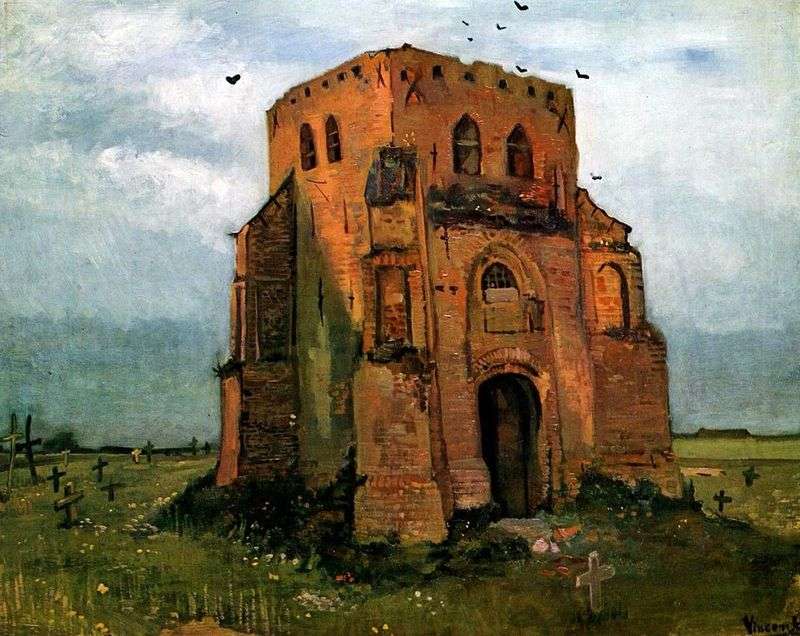
The painting “Peasant and peasant woman planting potatoes” was written in 1885. This is one of the earliest works of Van Gogh.
The artist tried to master the classical foundations of painting, but, not having a serious education, in the early stages of experiencing difficulties. He was very painfully worried about his inability to portray a man. On the one hand, this inability led to some static and awkwardness of his heroes. On the other, devoid of dynamics, the figures of people became as if part of an inanimate nature, partly merging with it.
This is clearly seen in the picture depicting two farmers working in the field. Van Gogh likens them to powerful rocks, inextricably linked to the earth. The artist specifically chose a high horizon line. It as though “presses” on peasants, bending them to the ground. Long dark shadows make the figures of people firmly standing on the ground, “tie” them to her.
The painting is written in the style of realism. The creation of the canvas by Van Gogh was inspired by the works of Jean-Francois Millet. He appreciated the creativity of this master and studied drawing, copying his works.
Despite some awkwardness in the performance of the figures, the inaccuracy of their proportions, Van Gogh created a very solid canvas, harmonious in composition and color solution. His deep respect for simple peasant labor was expressed in the monumentality of the figures of the peasants, firmly standing on their feeding ground.
 Portrait of a peasant woman in a green shawl by Vincent Van Gogh
Portrait of a peasant woman in a green shawl by Vincent Van Gogh Gordo de Groot, portrait by Vincent Van Gogh
Gordo de Groot, portrait by Vincent Van Gogh Peasant cleansing potatoes by Vincent Van Gogh
Peasant cleansing potatoes by Vincent Van Gogh Peasant knits sheaves (according to Mill) by Vincent Van Gogh
Peasant knits sheaves (according to Mill) by Vincent Van Gogh A young peasant woman in a straw hat by Vincent Van Gogh
A young peasant woman in a straw hat by Vincent Van Gogh Old church tower in Nuenen (Peasant Cemetery) by Vincent Van Gogh
Old church tower in Nuenen (Peasant Cemetery) by Vincent Van Gogh Two peasant women dig into the field with snow by Vincent Van Gogh
Two peasant women dig into the field with snow by Vincent Van Gogh Morning: departure to work (according to Mille) by Vincent van Gogh
Morning: departure to work (according to Mille) by Vincent van Gogh